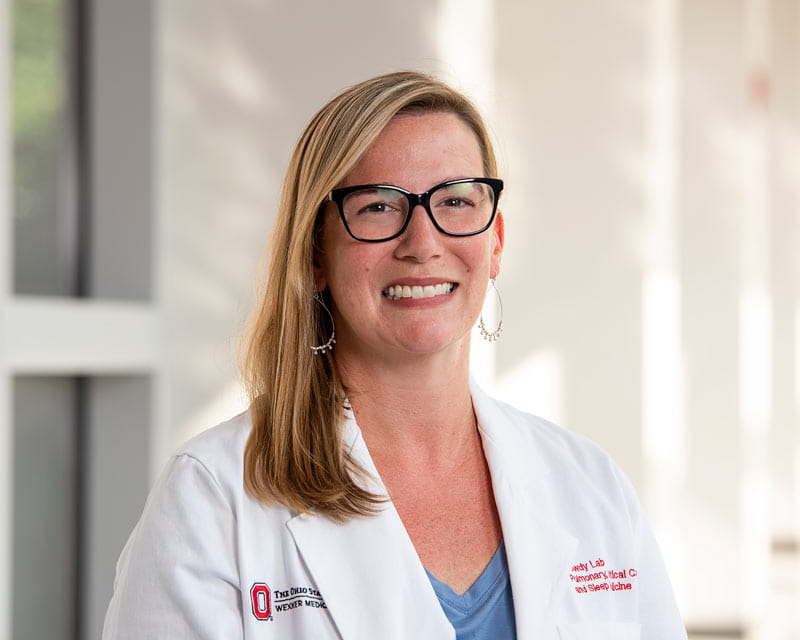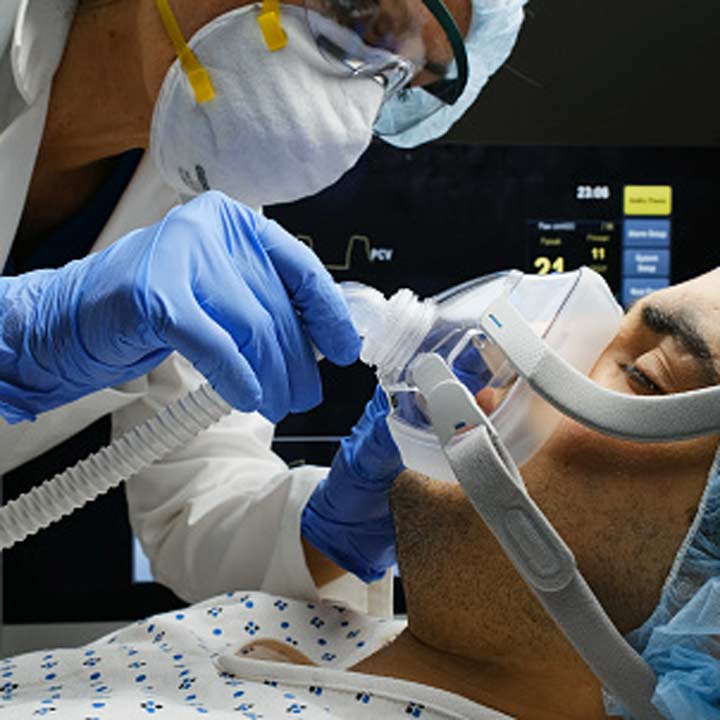
Ohio State Researchers Launch NIH-Funded Study on Ozone-Induced Pulmonary Inflammation
 “Among the advantages of doing research at one of the nation’s largest universities are opportunities to leverage new technology and unique collaborations,” says Elliott Crouser, MD, a pulmonologist at The Ohio State University Wexner Medical Center. He highlights two current clinical trials as examples. One utilizes a proprietary human ex vivo granuloma model that was developed in Dr. Crouser’s laboratory at Ohio State. Another leverages a collaboration between Dr. Crouser and Ian Davis, DVM, PhD, from The Ohio State University College of Veterinary Medicine that explores novel therapies for acute lung injury related to COVID-19 pneumonia.
“Among the advantages of doing research at one of the nation’s largest universities are opportunities to leverage new technology and unique collaborations,” says Elliott Crouser, MD, a pulmonologist at The Ohio State University Wexner Medical Center. He highlights two current clinical trials as examples. One utilizes a proprietary human ex vivo granuloma model that was developed in Dr. Crouser’s laboratory at Ohio State. Another leverages a collaboration between Dr. Crouser and Ian Davis, DVM, PhD, from The Ohio State University College of Veterinary Medicine that explores novel therapies for acute lung injury related to COVID-19 pneumonia.
Angiotensin-converting enzyme (ACE), a proximal regulator of the renin-angiotensin-aldosterone system (RAAS), has long been linked to sarcoidosis. However, the role ACE and RAAS play in disease pathogenesis remains unclear.
Dr. Crouser sought to determine the role of ACE and RAAS during the early development of sarcoidosis granulomas. He leveraged a newly established human ex vivo granuloma model where peripheral blood mononuclear cells (PBMCs) are challenged with beads that were covalently coated with a purified protein derivative (PPD) of Mycobacterium tuberculosis (M.tb). M.tb antigen exposure is indicated as one probable cause of sarcoidosis. Unlike healthy controls, the PBMCs from patients with sarcoidosis form into granuloma-like structures when incubated with PPD-coated beads for seven days. In keeping with RAAS activation, extracellular and intracellular production of aldosterone was demonstrated during sarcoidosis granuloma formation. This finding supports the premise that sarcoidosis PBMCs possess a fully intact RAAS. Preliminary investigations using commercially available inhibitors of ACE1 (captopril), ATR1 (losartan) and mineralocorticoid receptor (MR; eplerenone), the primary target of aldosterone, demonstrated dramatic suppression of sarcoidosis granuloma formation. Taken together, the data indicate for the first time that RAAS plays a direct role in the pathogenesis of sarcoidosis granulomas.
“Confirming the role of RAAS and understanding how it regulates sarcoidosis granuloma, as well how inhibiting AC1, ATR1 or MR suppresses sarcoidosis granuloma formation, is an important step in developing improved therapies,” Dr. Crouser says. “As a World Association of Sarcoidosis and Other Granulomatous Disorders (WASOG) Sarcoidosis Center of Excellence, we’re determined to do all we can to uncover new options.”
In another research initiative, Dr. Crouser is exploring the clinical benefit of using CDP-choline (brand name Citicoline®) to treat sepsis. This study builds on previous research conducted by Ohio State veterinarian Dr. Davis, who was the first to demonstrate the protective properties of CDP-choline in animal models of influenza and COVID-19-induced lung injury.
“We believe this therapy holds tremendous potential for humans, so our first step is to confirm its safety, and then we’ll determine what dosage could be beneficial. We’ll then apply these findings to phase II of our study,” Dr. Crouser says. To accomplish this, phase I safety studies will enroll critically ill patients with COVID-19 in a randomized control study with daily intravenous administration of 1, 5 or 10 mg/kg a day for five consecutive days.
“Based on the animal models and based on more than two dozen trials in humans, we anticipate little risk of Citicoline-attributable serious adverse events, even in this high-risk population at the 10 mg/kg dose,” he says.
The researchers will assess drug safety and will monitor lung protection on day three based upon SpO2:FiO2 (S:F) ratios, a standard measure of oxygenation status, along with exploratory endpoints reflecting systemic organ injury (sequential organ failure assessment) scores and dead space ventilation.
“This four-year project may lead to better treatment of COVID-19-induced acute lung injury,” Dr. Crouser says, “but we’re also excited about the promise CDP-choline holds as a therapy for other lung diseases like influenza or potentially lethal acute systemic inflammatory diseases such as sepsis. It’s already being used without reported complications in Europe and Australia for head trauma, stroke and other neurologic conditions, so the upside is exciting to consider.”
Any physician or patient interested in exploring pulmonology studies that are actively recruiting can find more detail at Ohio State’s Study Search.
To refer a patient to the Division of Pulmonology, Critical Care and Sleep Medicine, physicians or other care providers can call 614-293-4935 or fax a referral form to 614-293-1456. If urgent, after faxing call 614-293-5123 to expedite order entry.
Learn more about innovations in care and research from the Division of Pulmonary, Critical Care and Sleep Medicine.